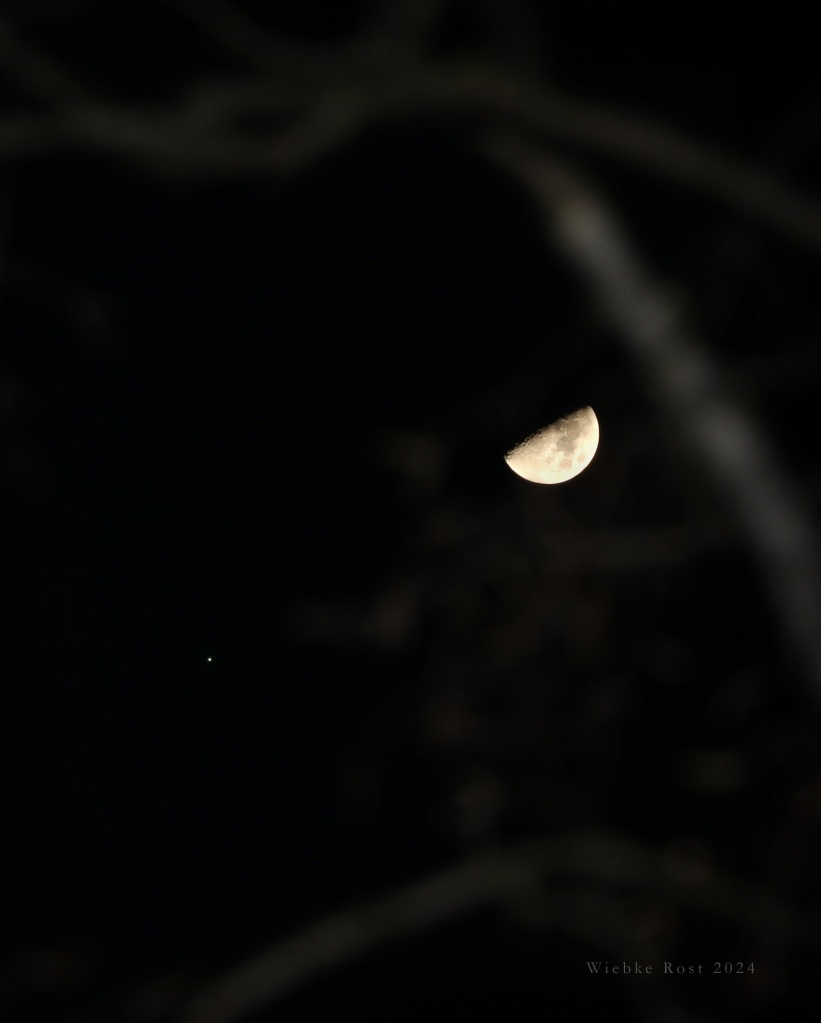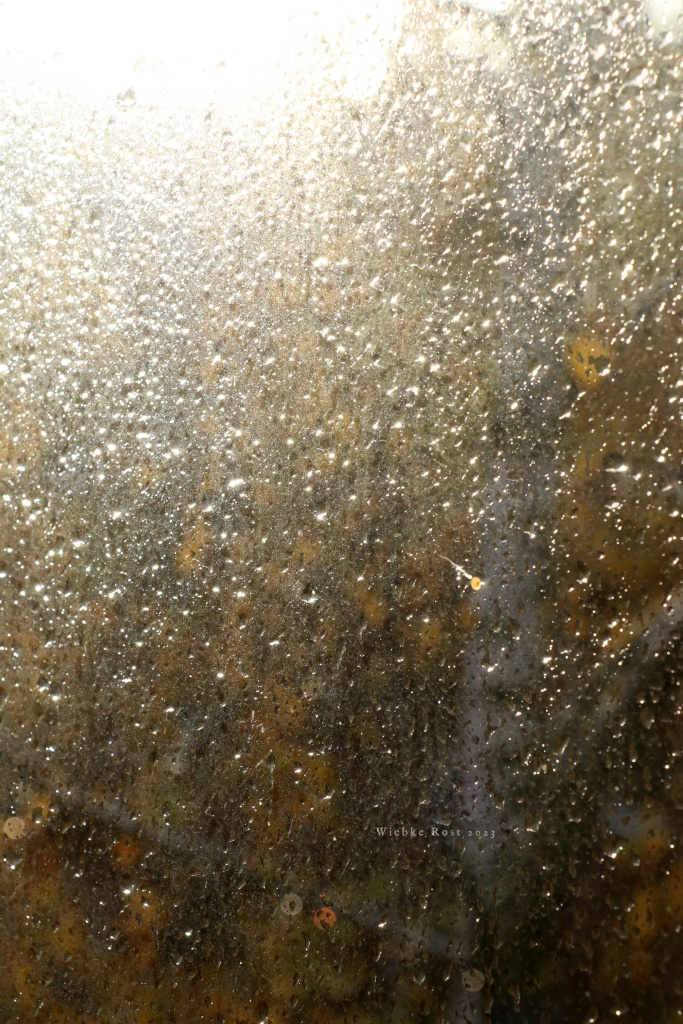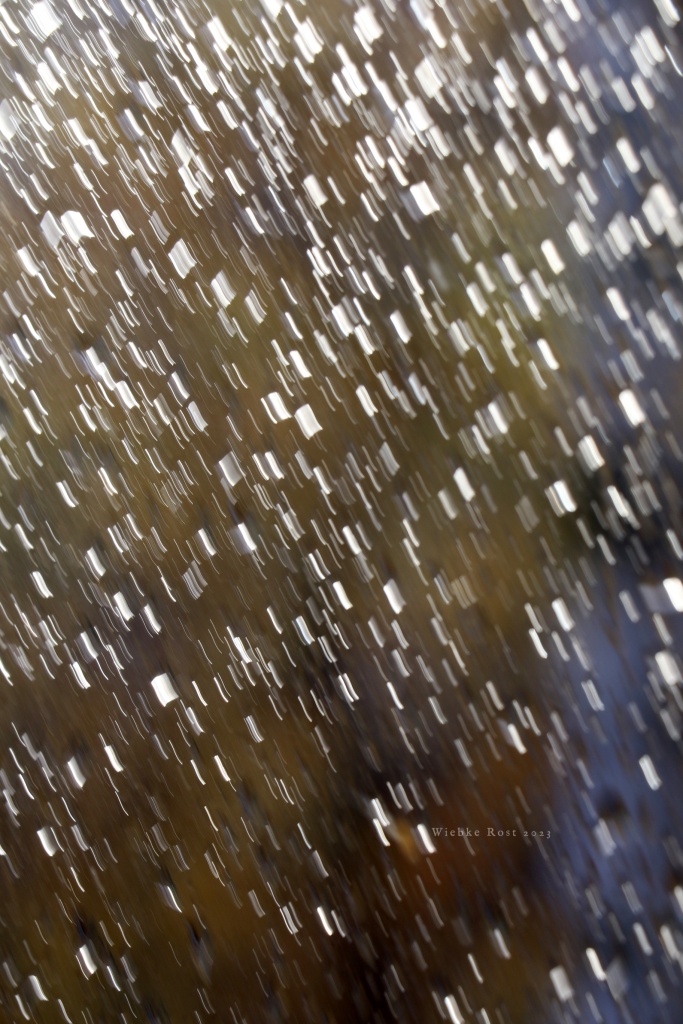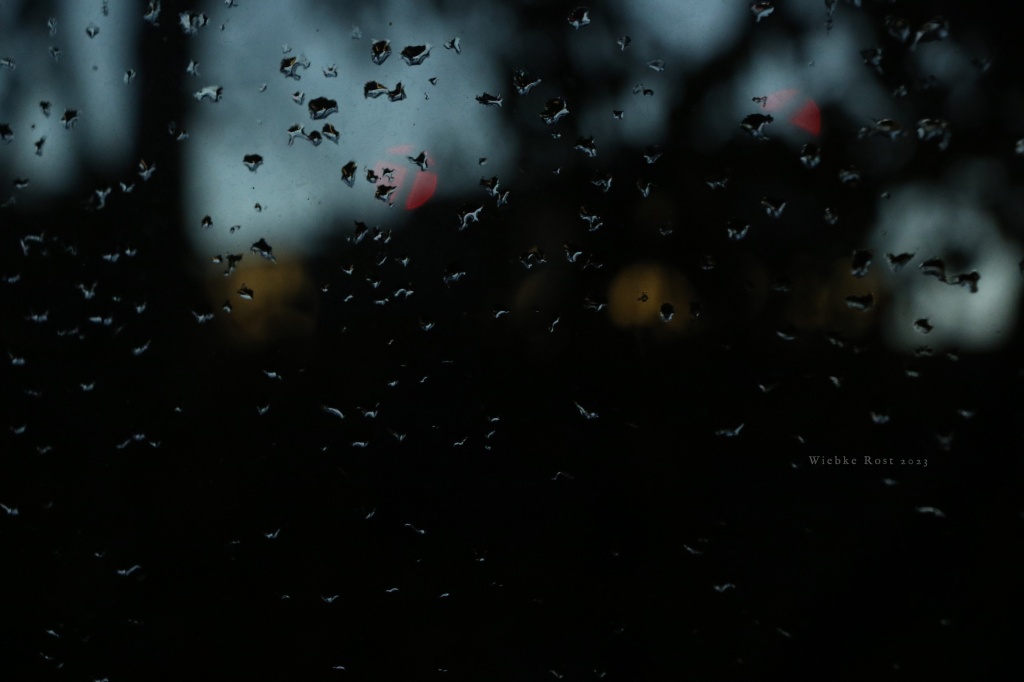January 18, Jupiter gets close to the first quarter moon in the South-Western evening sky

















November impressions – macro and close-up, rain drops, long exposure, motion blur and bokeh effect
November is named so because it used to be the ninth month in the Roman calendar. It is also known as Windmond, Wintermonat and Nebelung. It is the darkest month, hostile and chaotic. It brings storms, disorder and weird dreams. The November full moon is also known as freezing moon or frost moon and beaver moon.
It is raining and snowing and the earth is being saturated with water. The cold grayness is lit up by bright saffron blossoms, colorful tree branches and berries. Wild cherry trees color their crowns red; what looks like a fiery shield or warning sign is actually an invisibility shield against herbivores. By dropping their leaves the trees now ultimately strike their solar sails. Simultaneously the fallen leaves re-assemble to form a protective and nurturing blanket on the ground, for myriads of organisms to spend the winter underneath. Here the magic happens that alchemists seek to master. All of nature’s actions are inherently logical and perfectly adjusted.
November’s weird dreams are messages of wyrd – the weaveress, who spins, weaves and cuts the thread that forms the fabric of a person’s fate or destiny. Noteworthy, is wyrd not only the base word for modern English weird. Today the word weird denounces something supernatural, uncanny or unexpected. But wyrd is also connected to the German werden = to become, Wort = word as well as Wurz = a herb. Originally these terms, to become and to grow (as a plant) and the concept of wyrd (fate) may have been closely linked. Indeed, the wort cunner uses herbs to change a person’s destiny. The shaman or healer uses herbs to drive out sickness and avert death, which increase in the absence of day light.
The weaveress is present in many different pantheons. Sometimes she is part of a triad of goddesses of fate such as the Norse Norns, the Greek Morai and Roman Parcea. Other times she is an ancient mother goddess presiding over the souls of the unborn and the work of women, especially spinning and weaving. Germanic tribes knew her as Holle/Holda, today also identified with Perchta. Slavic peoples knew her as Mokosh or Zorya.
Frau Holle is envisioned to guard a deep well or pool from which she releases the souls of children to be born and into which she receives again the souls of the stillborn. She guards the cycle of life and death, birth and rebirth. Likewise she judges the work of man, blesses those, who finish their tasks in time and punishes those who are late or lazy. In the short month of November we are reminded that the year is in its final quarter and that we too must come to a close with our projects and rituals, but also, that we must take care of ourselves.
Ein bisschen Mondfinsternis, von heute Abend. Das erste Bild ist vom Mond, der den Kernschatten der Erde tangiert, aufgenommen um 20.13 Uhr. Die übrigen Bilder zeigen den Mond im Halbschatten mit rötlichem Hof, aufgenommen kurz nach 19.00 Uhr.
A bit of lunar eclipse, from this evening. First photo shows the moon touching upon the earth’s umbra, at 20.13. The other photos show the full moon in the earth’s penumbra with a red halo, at around 7 pm.
You have probably had enough eclipse photos thrown at you by now. Alas, I at least wanted to add an own photo to my “Sun, Moon and Stars” collection. So here are is a sequence of the partially eclipsed moon, 1 per second… and a simple one of the eclipse, 2 minutes before midnight. That was the best I could do with a tripod and Sigma lens. At least one can see the Tycho and Grimaldi Crater, as well as the Mare Nubium and Humorum.
Sunsets and Cloud Scapes over Düsseldorf, photographed in April, July and August 2018
The Perseids are a prolific meteor shower associated with the comet Swift–Tuttle. The meteors are called the Perseids because the point from which they appear to hail (called the radiant) lies in the constellation Perseus. The name is derived from the word Perseidai (Greek : Περσείδαι), the sons of Perseus in Greek mythology.
What we see as “shooting stars” is actually a cloud of debris – tiny pieces ejected by the comet Swift-Tuttle, as it travels along its 133 year orbit around the sun. These particles burn up in the earth’s atmosphere at around 80 km height. They are visible every year from July to August and reach maximum activity between August 9-14, depending on the location of the stream. During the peak, the rate of meteors reaches 60 or more per hour.
They can be seen all across the sky; however, because of the shower’s radiant in the constellation of Perseus, the Perseids are primarily visible in the Northern Hemisphere. [from Wikipedia]
Shown above are photos from my first attempt at capturing the “Perseids”. They occurred in pretty much all directions and I saw some brilliant trains high in the sky as well as fireballs just short above the horizon line. But it was difficult to photograph them.
I set up the camera towards the North East and the constellation Perseus, with the widest angle available (f 18 mm) and 30 seconds exposure time. And then I spent the following 2 hours pressing the shutter every 30 seconds…
The camera did capture a few Perseids as well as plenty of planes. The difference is that a plane shows a twofold and non-continuous light trace (because the plane lights blink periodically) whereas the train of a meteor shows as a thin, continuous bright line on the photo.
Later that night Auriga rose in the North and the Pleiades became visible in the North East. The camera caught a small train directly above the Pleiades.
Around 2 am the sky started to cloud and my photo session ended.
In the photos I marked some of the constellations and stars for orientation. I hope you enjoy this little excursion. I recommend to check this website for further reading: https://sternenhimmel-fotografieren.de/sternbild-perseus-perseiden-h-und-chi-herz-und-seele-herznebel-sternschnuppen-finden-beobachten-fotografieren/
The first evening of the year 2017 gave a magical sight: the sharp sickle of the waxing moon’s crescent aligned with Venus and Mars at around 7 pm. In addition one could see structures on the dark side of the moon, which are usually merge with the dark night sky and are not visible. Perhaps the sky was brighter tonight due to light being reflected by dust particles in the air from last night’s fireworks. The photos were taken at around 7 pm in Dresden Dölzschen.
Visiting a sunflower field, before venturing on to gather wild herbs and rowan berries. I recharge and absorb the warmth of the evening sun. The temps have dropped to a chilling 12 °C. Going deeper into the sunflower field, a bee, stiffened from the cold, is stuck to a huge sunflower head. I wonder if it will make it through the night. It would wake up to plenty of food though. A few seconds later the sun has vanished and the sky is ablaze…